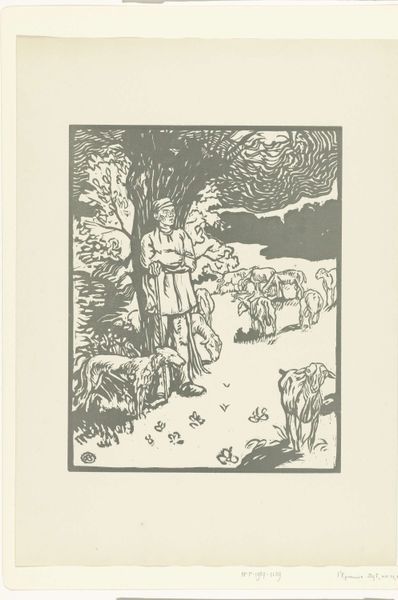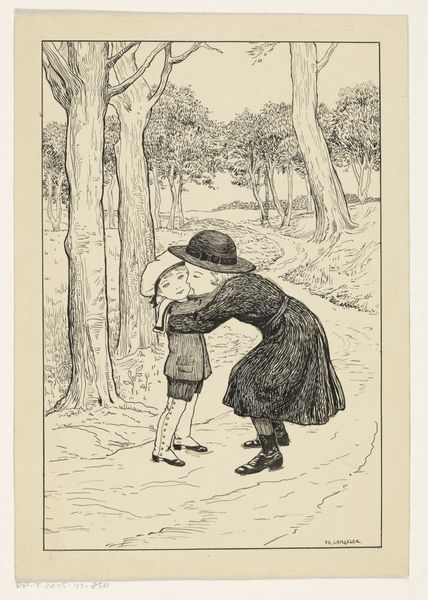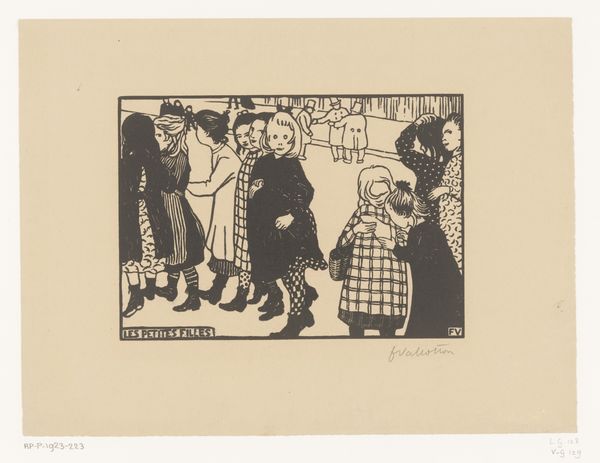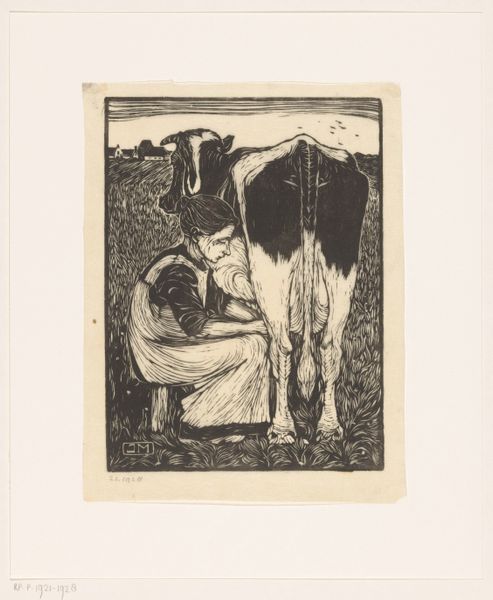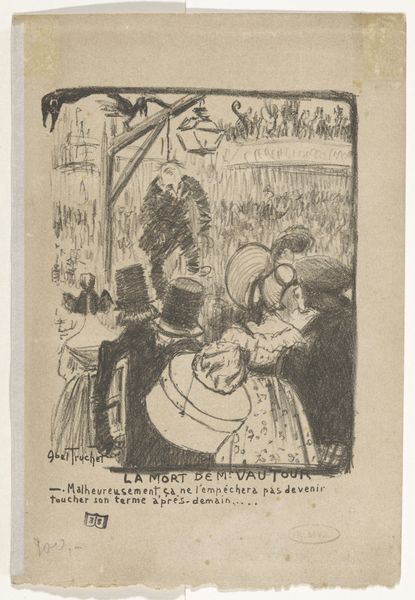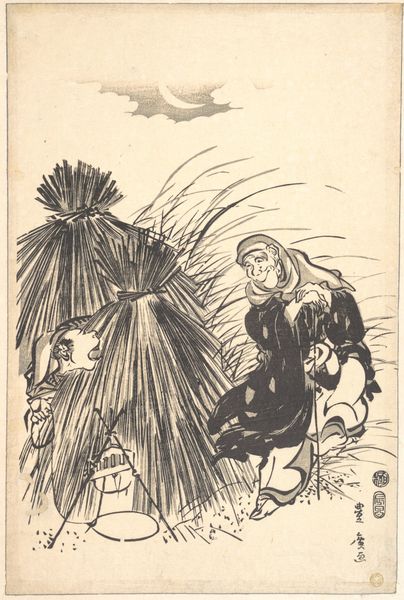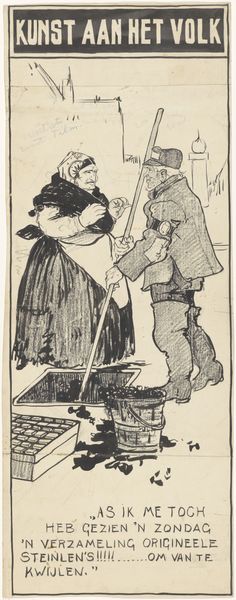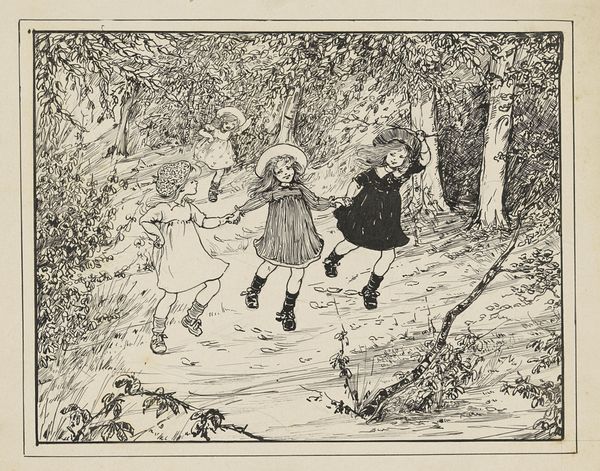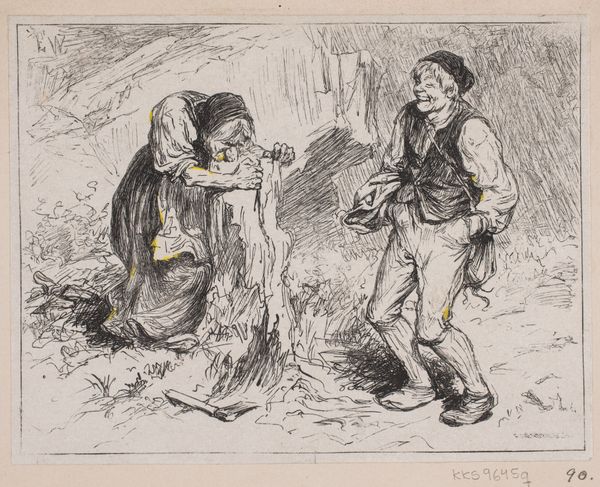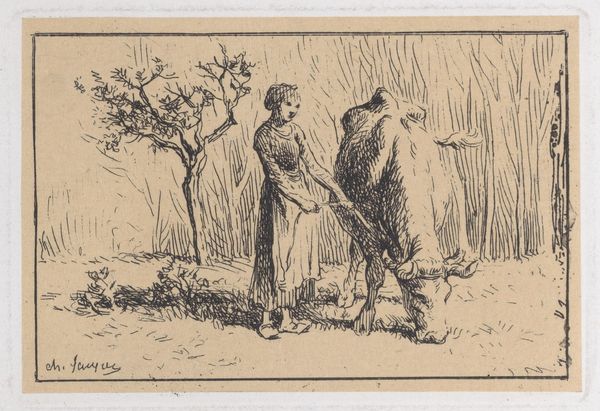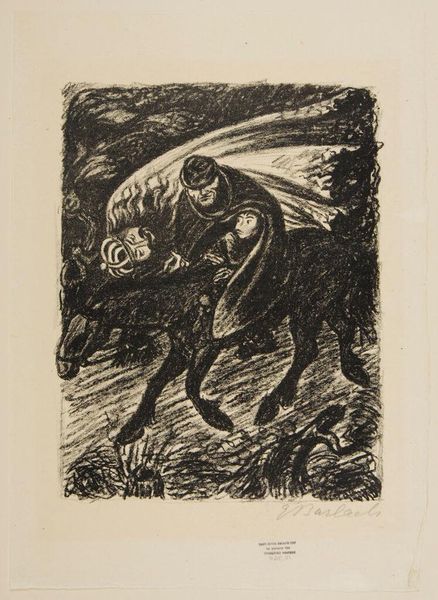
The Joys of Brittany, from the Volpini Suite: Dessins lithographiques 1889
0:00
0:00
drawing, lithograph, print
#
drawing
#
lithograph
# print
#
landscape
#
figuration
#
symbolism
#
genre-painting
#
post-impressionism
Dimensions: 7 15/16 x 9 1/2 in. (20.2 x 24.1 cm)
Copyright: Public Domain
Editor: This lithograph by Paul Gauguin, created in 1889 and titled "The Joys of Brittany," presents two figures against a rural landscape. I’m immediately struck by the flattening of space and the seemingly simple, almost stark, forms. What do you see in this piece? Curator: I see Gauguin engaging with the complexities of representation, specifically concerning the rural, and how that's tied to cultural identity. Brittany became, for Gauguin and others, a site of "authentic" French culture, seemingly untouched by modernity. But consider, whose idea of authenticity are we seeing represented here? Editor: So it's not just a depiction of rural life, but a commentary on how it's being perceived? Curator: Precisely. The figures, the "Bretonnes," are stylized, almost monumental, suggesting a constructed image rather than a simple observation. What strikes you about their presentation? Does it feel like a celebration, or something else? Editor: I see the stark lines and simplification, and now I'm less convinced about celebration...It feels almost...clinical? Is he romanticizing or critiquing? Curator: It's in that tension that the work becomes most interesting. Gauguin is participating in, and perhaps also questioning, the romanticization of rural life and its inhabitants. He's playing with these notions, but also benefitting from the exoticization of this population, and their identity for his art. It raises really crucial questions about cultural appropriation and the artist's role in constructing these images. Editor: I see how this piece operates on multiple levels. The style initially suggested a naive perspective, but now I'm noticing a very conscious staging of identity, gender, and class within a specific cultural and art-historical narrative. Curator: Exactly, it encourages us to question the assumptions behind seemingly simple representations and the artist's responsibility. It’s not enough to see what's on the surface, we need to interrogate the historical and cultural forces at play. Editor: Thank you, I appreciate you providing an avenue to delve into the complexities interwoven in this seemingly "simple" depiction of the Breton landscape and how cultural narratives come into play.
Comments
No comments
Be the first to comment and join the conversation on the ultimate creative platform.

